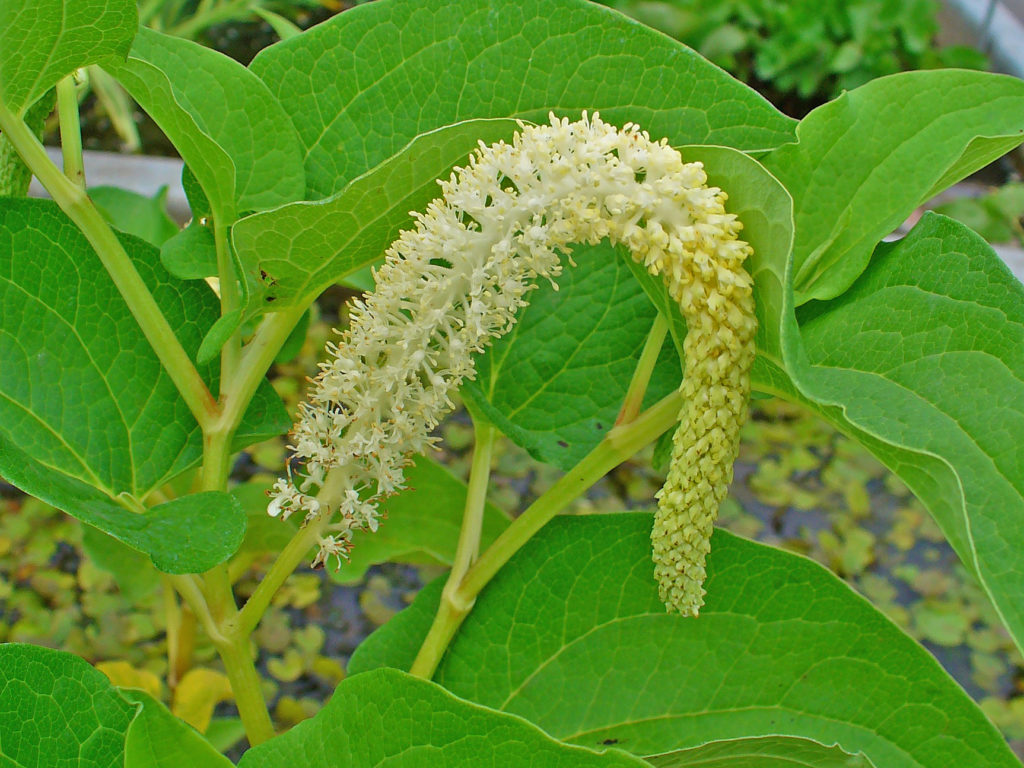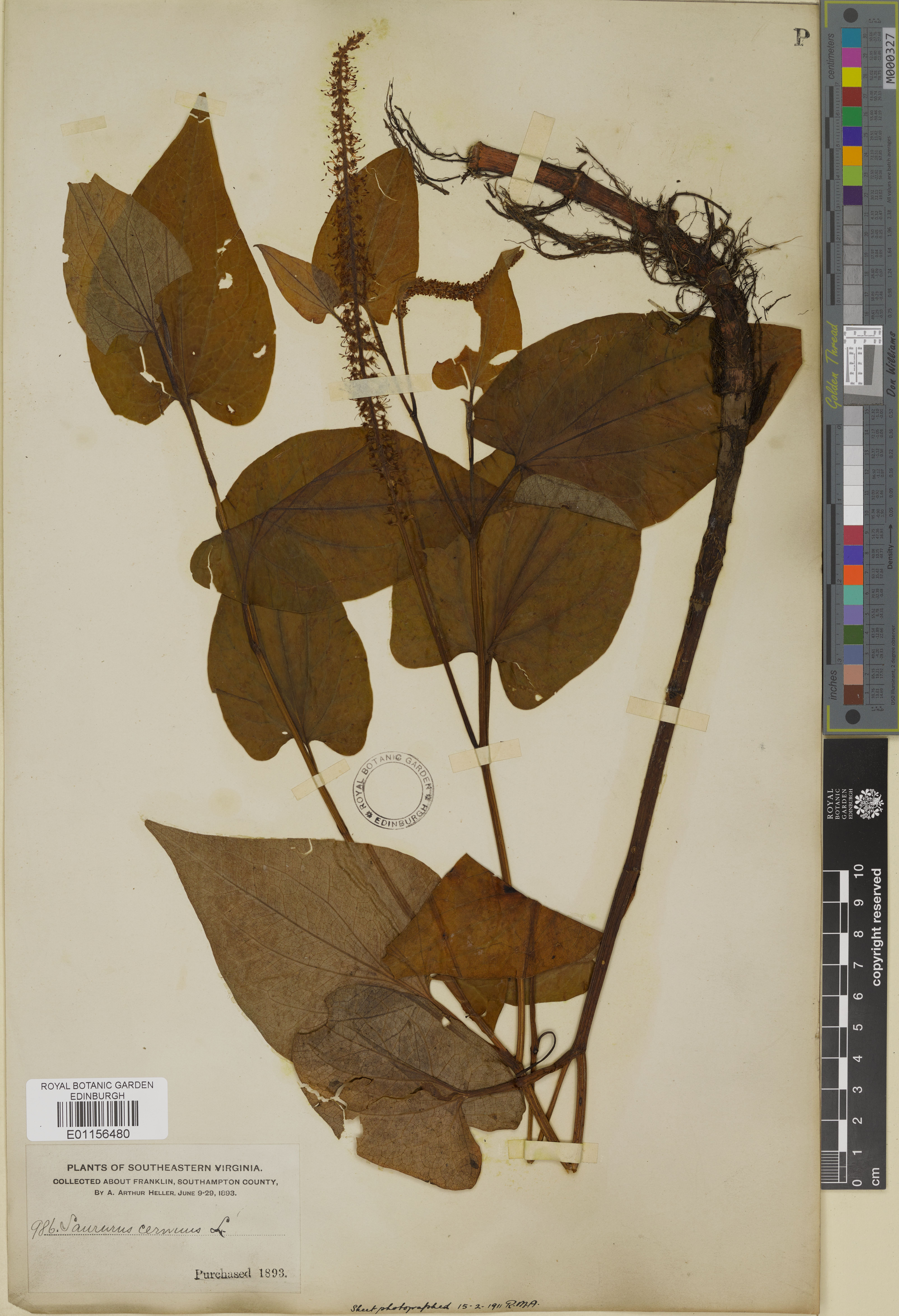The following blog was written by Chris Knowles a digitiser in the Herbarium.
Since 2021 we have increased our digitisation capacity with the goal of getting to 1 million specimens imaged by Autumn 2024. Each digitiser is assigned a family of plants to work through. This series of blogs will spotlight the families that have been completed by a member of the team.
While digitising the family Saururaceae I came across a specimen of the bog plant Saururus cernuus which has many common names in North America where it is from (Lizards tail, Swamp lily, Water-dragon, Dragon’s tail, and Swamp root).

The specimen had been collected in Southeastern Virginia in 1893, (Royal Botanic Garden Edinburgh – Herbarium catalogue (rbge.org.uk)) but the thing that caught my eye was the writing at the bottom that says “Sheet photographed 15-2-1911 R.M.A.” so as I lifted the specimen to be imaged I realised that I wasn’t the first to do it.Saururus cernus
With a little research I discovered that this referred to Robert Moyes Adam who worked at RBGE from 1903 until 1949, and was for much of that time the garden’s photographer.
I bought this to the attention of the RBGE archives and library staff, who were amazingly helpful and within minutes had located the original glass plate negative of Adam’s 1911 photograph.


Seen here side-by-side, but taken 112 years apart it is possible to see how well the preserved specimens survive time in the herbarium, with the biggest change to the sheet being the barcode I added to it for the digitisation project.
The photographs we take for herbarium digitisation project use specialised equipment to achieve a really high quality picture. Those images are then processed to go onto the online RBGE herbarium catalogue and are saved at a high resolution which allows researchers anywhere in the world to magnify the image up to 10x with great clarity. This is to mimic the effects of looking through a 10x hand lens that botanists and taxonomists often use to help identify small characteristic features of plants.
What was interesting to note though, was the quality of the older photograph. The image here is a recent scan of the original glass plate negative. Although not in colour, the method used to produce these negatives means that they give a true, analogue image that is not limited by pixels or even the grains of silver found in old photos. As such, the only real limit to how dar you can magnify an image made from this plate is that of the modern scanning device and software used to do it.
A fantastic example of how Victorian era craftsmanship can still give the latest technology a run for its money.
Our archivist Leonie Paterson has previously written about Robert Moyes Adam and you can find out more about his work at RBGE here.
A good in-depth explanation on the resolution of glassplates is here.
